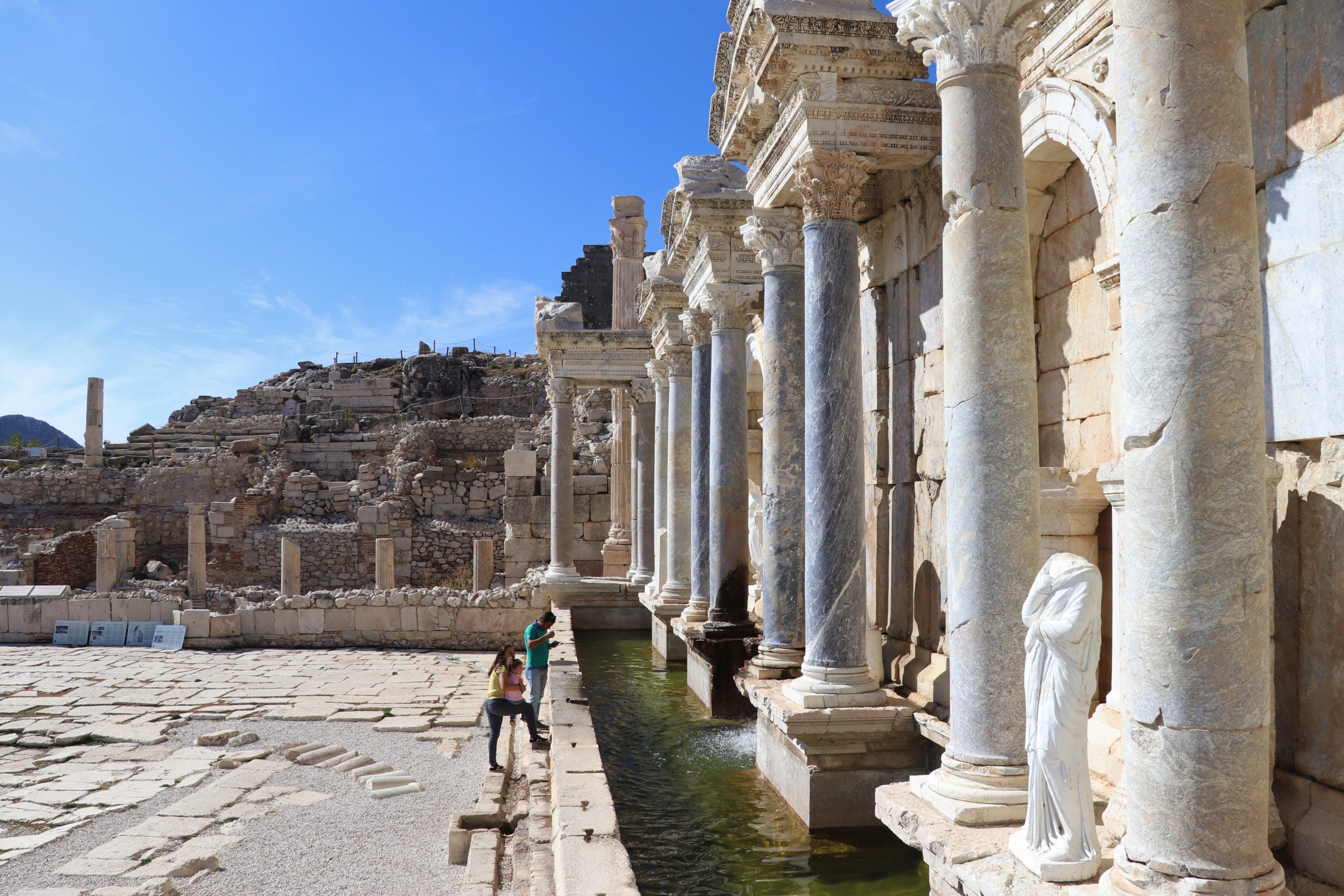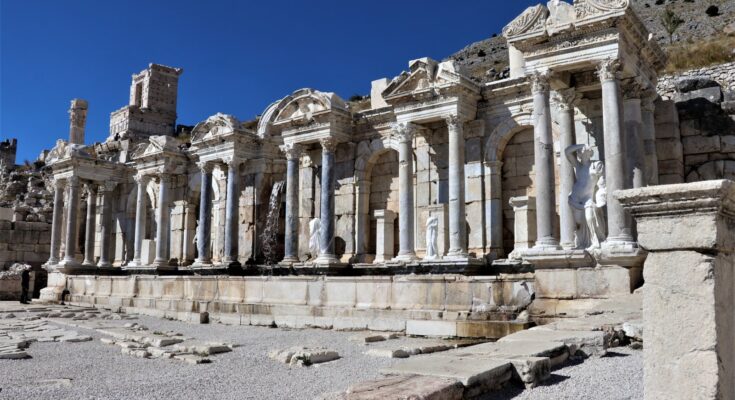Nestled in the breathtaking Taurus Mountains of southwestern Turkey, the Sagalassos Fountain stands as a testament to the grandeur and architectural brilliance of the Roman Empire. Built between the 2nd and 3rd centuries AD, this monumental fountain continues to captivate historians, archaeologists, and visitors with its exquisite design and historical significance. As one of the best-preserved ancient fountains in the world, it offers a glimpse into the thriving cultural and commercial life of Sagalassos, an important Roman city.

A Jewel of Roman Engineering
The Sagalassos Fountain, also known as the Antonine Nymphaeum, was not merely a source of water but a symbol of prosperity and civic pride. Constructed as part of a grand bath complex, the fountain showcased the Romans’ advanced engineering skills and artistic sophistication. Featuring intricately carved reliefs, marble columns, and lifelike statues, this structure was a focal point of daily life, where citizens gathered to socialize, relax, and appreciate the splendor of their city.
The fountain was designed to channel water from nearby mountain springs, delivering a continuous flow that created a mesmerizing visual and auditory effect. The cascading water, coupled with the surrounding sculptures of gods, nymphs, and mythical creatures, turned the fountain into an awe-inspiring spectacle.
The Prosperity of Sagalassos
During its peak, Sagalassos was a thriving metropolis, benefiting from its strategic location along trade routes connecting the Mediterranean to Central Anatolia. The city flourished under Roman rule, boasting magnificent public buildings, temples, and theaters. The construction of the fountain reflected this prosperity, as only the wealthiest and most significant cities could afford such grand structures.
The fountain played a crucial role in everyday life, serving both practical and aesthetic purposes. Water was essential for bathing, drinking, and religious rituals, and the presence of an opulent fountain signified the city’s affluence and cultural sophistication.
Rediscovery and Restoration
For centuries, Sagalassos lay hidden beneath layers of earth and time, its structures slowly succumbing to nature. It wasn’t until the late 20th century that archaeologists unearthed the ancient city’s remnants, revealing its hidden treasures, including the majestic fountain.
Painstaking restoration efforts have breathed new life into the Sagalassos Fountain, allowing visitors to witness its former glory. The carefully reconstructed sections, combined with original elements, provide a rare opportunity to experience Roman architectural excellence firsthand. Today, tourists marvel at the preserved statues, the elegantly flowing water, and the serene mountain backdrop that enhances the site’s timeless beauty.
A Timeless Attraction
The Sagalassos Fountain remains a must-visit destination for history enthusiasts, travelers, and archaeology lovers. It stands as a tribute to the ingenuity of Roman civilization and the enduring legacy of Sagalassos. A journey to this ancient wonder offers more than just a sightseeing experience—it is a voyage back in time, where the whispers of a once-glorious city still echo through its stone-carved masterpieces.



